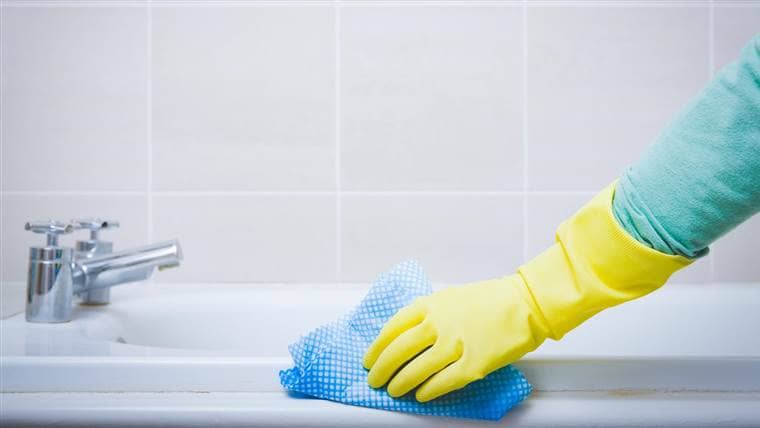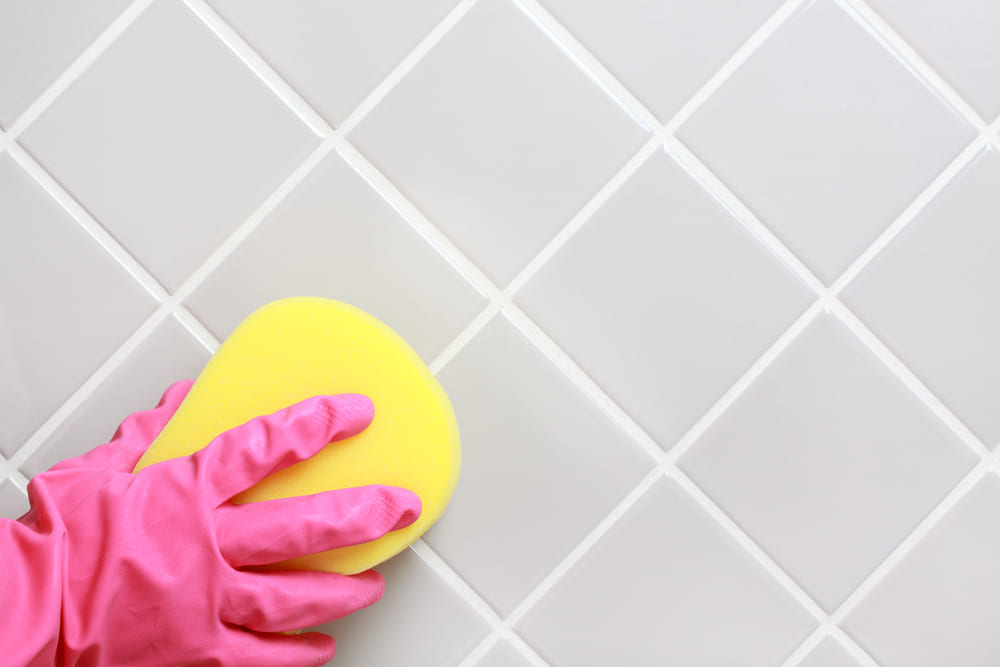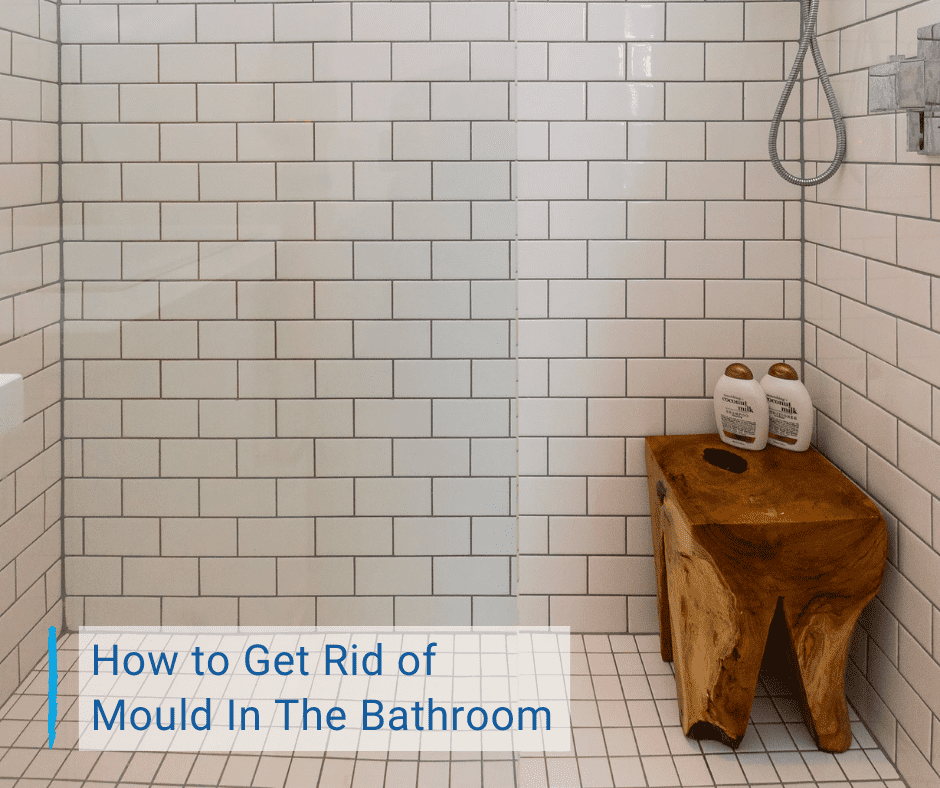Do you have mould in your bathroom? Here’s how to get rid of mould!
We receive this question all the time and it’s nothing to be ashamed of. Instead, it is common to find mould growth in showers, baths, sinks, and other high-moisture areas. Mould flourishes in certain environments, and your shower is certainly one of them. Luckily, there are some things you can do to combat mould using basic household cleaning products. That’s why we created this article on how to get rid of mould in your bathroom.
No matter what you do, DON’T scrape mould with your fingers or scrub it dry with a brush, as this will cause living mould spores to fly up in the air. Consequently, they’ll find somewhere else to land, thrive, and give you additional headaches.

Trick 1: vinegar
Vinegar has been found to kill 82% of mould species! In addition, it is great at preventing mould in the first place. Vinegar contains no toxic fumes like many other agents used to kill mould, such as bleach. Therefore, it is a great product to get rid of mould in the bathroom. The next steps tell you how to get rid of mould with vinegar.
- Pour mild white vinegar into a spray bottle, do not dilute with water. Vinegar’s acidic qualities make it quite deadly to mould, that’s why you don’t want to water it down.
- Spray affected surface areas with straight vinegar solution and wait for one hour. If your bathroom has windows, open them up and let it air out during this time.
- After an hour has passed, use hot water and a clean towel to wipe the area. Make sure surfaces are dry to prevent mould from coming right back.
Vinegar isn’t always strong enough to get rid of mould on its own, but it is great at preventing mould from growing in the first place. Keep that spray bottle of vinegar in your bathroom at all times and use it to spray surfaces prone to mould, whenever they get wet. This makes it difficult for mould to grow, which means you won’t have to waste time removing it in the first place.
Trick 2: baking soda and bleach
It’s important to note that bleach does not kill mould; it simply removes the stain created by mould. Vinegar, as mentioned above, is a great way to get rid of it. Start with the vinegar method and then move onto this method for the best results.
- Mix one teaspoon of liquid soap and one cup of baking soda. Add several drops of essential oil, such as lavender, peppermint, citrus, etc.) and then add enough hot water to create a paste.
- Next, in a separate bowl, combine one part of bleach with two parts of water. Add the mixture to a spray bottle.
- Use the bleach solution to spray the affected areas in your bathroom. Let it sit and dry.
- After the solution dried, respray the area with your bleach solution. This time, get in there with a scrub brush.
- Rinse the wall, and if you still see mould, go at it again repeating until the mould vanishes.
- In some cases, grout or caulking must be replaced.
Is mould in your bathroom making you sick?
For the most part, mould is harmless to a healthy person but some mould can make you sick and cause health issues, especially for individuals with weakened immune systems or allergies to mould.
80 of the 1.5 million known species of mould are classified as allergenic. However, if you are prone to allergies, the chance of mould making you sick increases significantly. Allergic reactions to mould may include flu-like symptoms, coughing, mood changes, skin rashes, sinusitis, respiratory issues, dizziness, or fungal infections of the lungs.
Chances are that the mould in your bathroom is not negatively impacting your health, but that doesn’t mean you should simply let it be.
Trick 3: keep mould away with preventative measures
Once the mould is removed you can keep it away in the following ways:
- Always remove moisture from shower walls (or other mould-prone surfaces).
- Regularly spray vinegar to prevent the formation of mould, and kill existing mould spores.
- Wash rugs, shower curtains and other bathroom accessories on a weekly basis.
- Control humidity in rooms prone to moisture and try to promote better airflow. For instance, add a fan to small rooms without windows or without a natural airflow.
- Add ventilation.
- Limit the number of products in your bathtub or shower, because the more cluttered the area the higher the chance mould can hide and thrive.

Now you know how to get rid of mould in your bathroom. But we have more ways to help you eliminate mould. Click here to read on. If you need some further clarification, do not hesitate to leave a comment.

